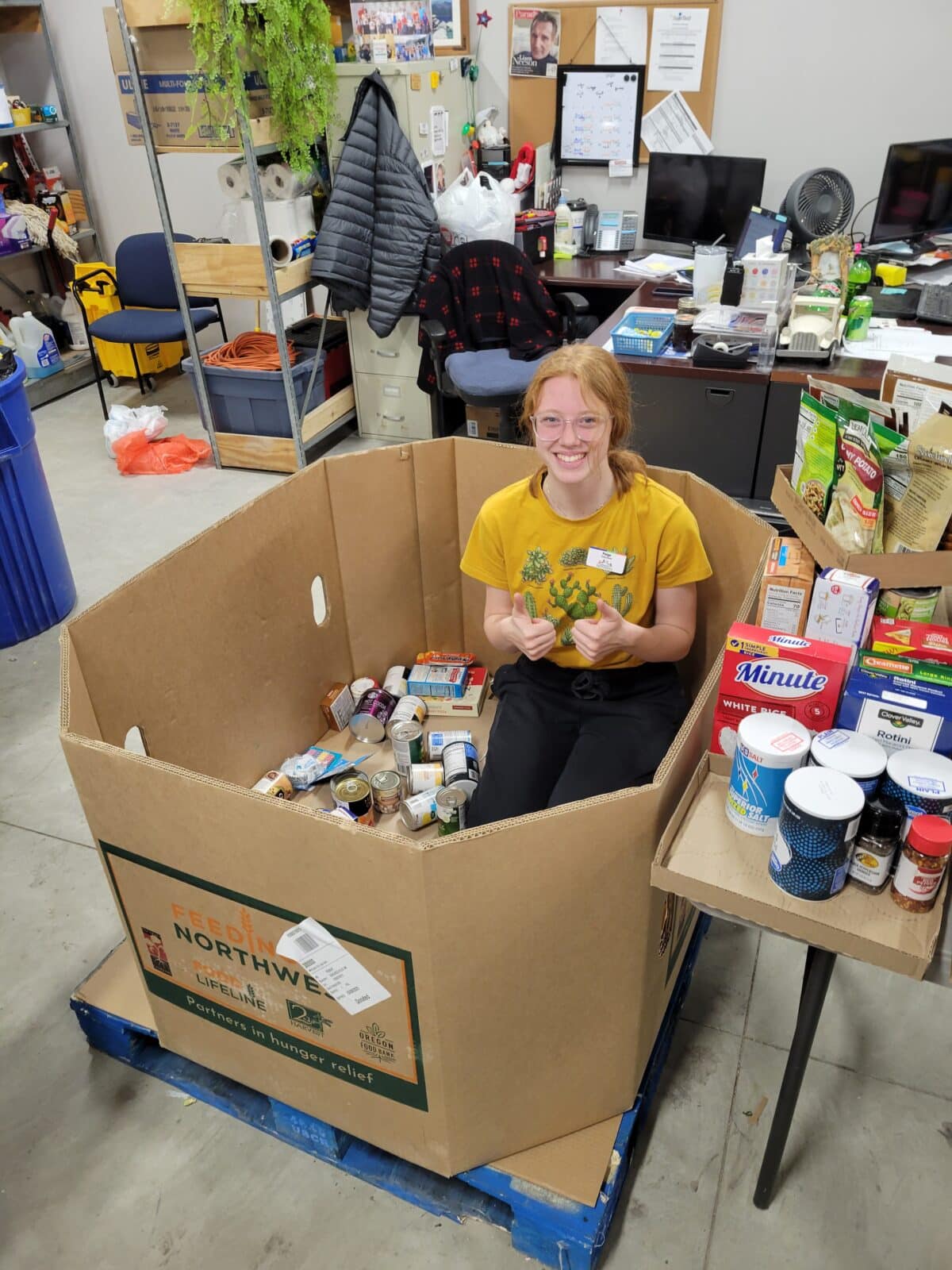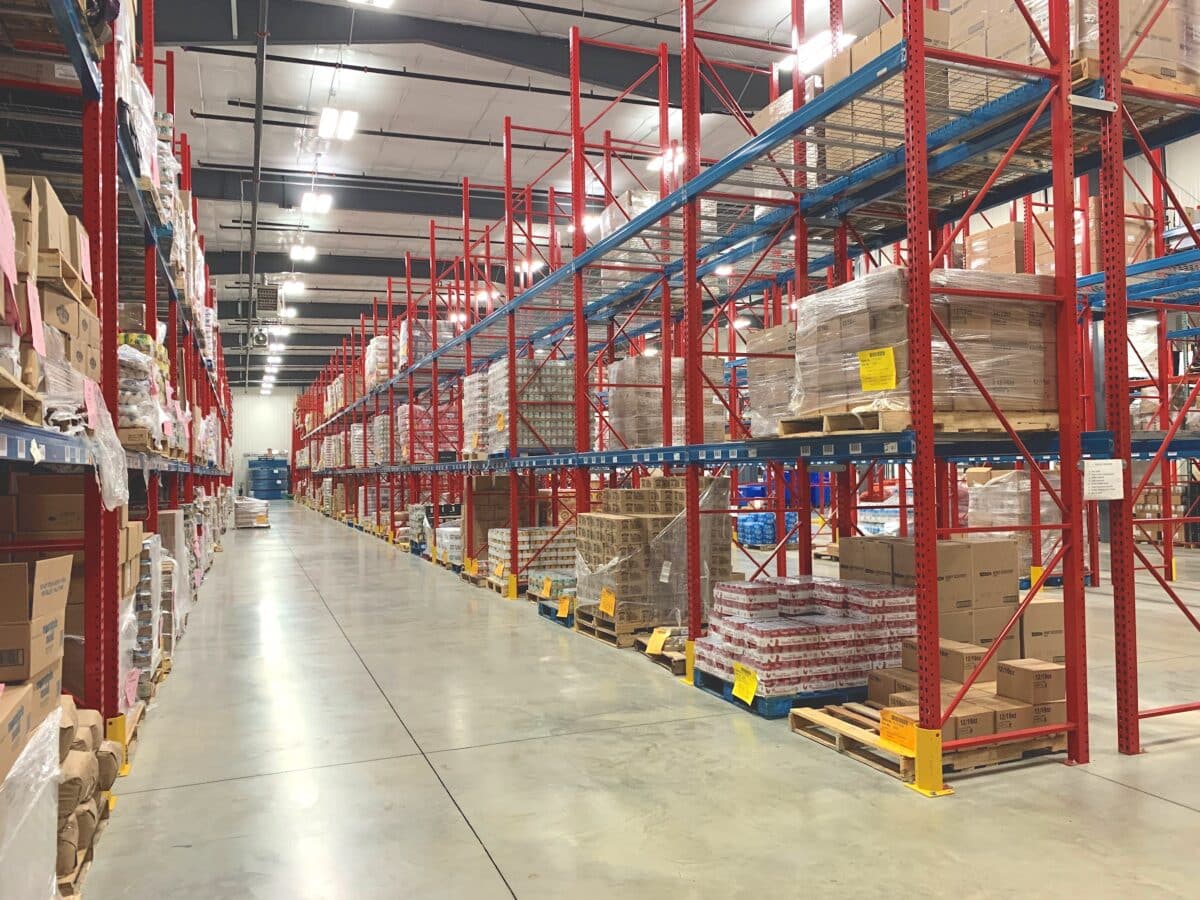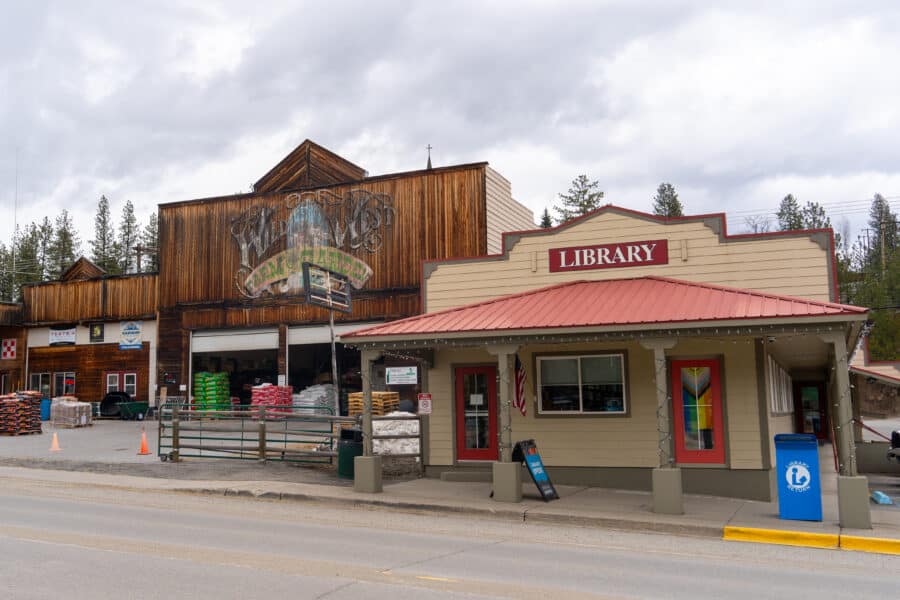“It’s kind of the perfect storm of everything,” says Dom Korbel, executive director of Community Pathways of Steele County. As part of his job, Korbel oversees this community organization’s food shelf in Owatonna, Minnesota (food shelves are also called food pantries in other parts of the country). This year, Korbel says, the food shelf has seen an increase in the number of people who need their services, while at the same time they have found it harder to provide people with food.
End of Emergency Food Aid Strains Rural Minnesota Food Shelves
With end of pandemic-era SNAP benefits, food-insecure rural Minnesotans are turning to community nonprofits to feed their families


“Demand went up, prices went up and supply went down, and access to some of the COVID resources that food banks had disappeared,” he says. “So it’s like everything hit them simultaneously.”
If House Republicans decide to shut down the government this week, the state’s already stressed food pantries will likely face a surge in demand. Agriculture Secretary Tom Vilsack told reporters this week that in the event of a shutdown, the Special Supplemental Nutrition Program for Women, Infants, and Children, known as WIC, “expires… or stops immediately.” WIC provides food to 6.6 million women, infants and children younger than five, including 108,420 Minnesotans.
Although much of Minnesota’s population is concentrated in the Twin Cities, Minneapolis and Saint Paul, a quarter of Minnesotans live in rural areas. I spoke with people who work at food shelves across the state, from Rochester in the southeast to International Falls, which lies on the border with Canada. They describe how a rise in the cost of living, combined with the end of pandemic emergency aid programs, have increased demand for their services, while at the same time, food assistance programs face more challenges in meeting that demand.

“We’ve had our highest three months ever in our history for serving people, May, June, and July of this year,” says Virginia Merritt, executive director of Channel One in Rochester, Minnesota, which serves Olmsted County. Channel One operates a food shelf that directly distributes food to people in Olmsted County, as well as a food bank, which distributes food to other food shelves in the surrounding region, including southeast Minnesota and La Crosse County, Wisconsin. Over those three months, Channel One saw an average of 6,876 household visits per month, representing a 13 percent increase over the same time period in 2022. It’s a trend that can be seen across the region.
Laura Smith is a director of a food shelf that operates out of First Lutheran Church in Aitkin, Minnesota, a town of 2,100 in Aitkin County. In this Northwoods County, 15.5% of those under age 18, and 11% of those age 65 or over, live below the poverty line.

Smith says that attendance numbers at the First Lutheran Church food shelf dropped at the start of the pandemic but have started to pick up more recently. These days the church’s food shelf serves 100 to 112 people each month. The decrease in numbers, she says, “was back when they were giving out that extra money,” including stimulus checks, enhanced unemployment insurance and emergency SNAP benefits (E-SNAP). In addition, Smith says, “people were also staying home, not going out, and that kind of thing.”
“We have definitely seen a huge rise,” says Ashley Hall, executive director of Koochiching County Food Access in International Falls in far northern Minnesota. In Koochiching County 16.1% of those under age 18 and 13.4% of those age 65 or over live below the poverty line. On average each month of 2023, Koochiching County Food Access has been serving 664 people and 346 households—or 5.6% of county residents—numbers which do not include the group’s school-based and mobile food pantries.
“One of the biggest things we’ve been hearing lately is that their SNAP benefits are gone or have been diminished greatly,” Hall says. “We’ve had our highest days on record, repeatedly.”
“At the end of 2021, we had an average of 250 families shopping per week for food,” says Dom Korbel, executive director of Community Pathways of Steele County in Owatonna, Minnesota. “At the end of 2022, that number had climbed to 532 families shopping per week, and our current six-week average is 821 families shopping per week.” In Steele County 7.1% of people under 18 and 7.1% of those over 65 live below the poverty line.
Rural Americans face additional challenges
Of course, E-SNAP and other emergency benefits have ended everywhere. But rural areas have been hit particularly hard.
“As you get further away from the [Twin Cities] metro, there are fewer resources to tap to find help,” says Korbel, who notes that Community Pathways of Steele County is the only game in town. “There’s a couple smaller, little pantries and churches and such, but we’re really the option in Owatonna and in Steele County.”

Also, while housing is usually cheaper, other costs of living can be higher in rural communities. Transportation, for example. Not only are things generally farther apart in rural areas, there are fewer transportation options for people. International Falls, Hall says, is the only town in the area with any public transit, and even that is a dial-a-ride service that is much more limited than a big-city bus or train. “If you don’t have a car, or your car breaks down, it’s impossible to get around.” She says it is also common for people to have to travel an hour and a half or more to get to a healthcare appointment.
“We do quite a bit of delivery to meet those needs, of people who don’t have transportation or [have] mobility issues,” says Sandy McClurg, executive director of the Big Lake Community Food Shelf in Big Lake, Minnesota, a town of 11,000 in Sherburne County, where 3.5% of those under age 18 and 10.1% of those age 65 or over live below the poverty line. The Big Lake food shelf serves approximately 200 households per month for full service grocery shopping, and an additional 700 households per month through pop-up distributions of perishable foods. According to McClurg, 64% of those those the food shelf helps feed are children under the age of 18.
While inflation has eased somewhat recently, higher prices are still hitting Americans hard. However, rural residents are often not included in inflation calculations, according to Stephan Weiler, an economist at Colorado State University in Fort Collins. To create the main sets of inflation data, he says, the government surveys about 70 large cities each month. “Rural areas are completely ignored.”
“Rural households are generally more isolated, which means that they have to drive further,” Weiler says. “The services that are close by, are maybe of not as high quality—for example, healthcare.” In addition, in rural areas grocery prices tend to be more expensive. “Everything that they buy locally has to get shipped there,” he says. “That costs money.”
Weiler pointed to the work of the sociologist David Peters at Iowa State University, who has estimated rural inflation numbers by combining data on urban inflation and rural and urban spending patterns. Peters found that while overall urban and rural inflation were broadly similar at the time, rural residents were more sensitive to price changes in some areas, such as fuel and cars.
The Farm Bill and the future of hunger
In addition to inflation, the end of SNAP and other pandemic emergency aid programs appears to have contributed to an increase in demand for food shelves. The farm bill, a federal law that governs a grab-bag of agriculture and food-related programs, is up for renegotiation this year.
In fact, even as food shelves struggle to meet demand, some policymakers might try to restrict SNAP further. Amid negotiations over the 2023 Farm Bill, some Republican lawmakers could attempt to further expand SNAP work requirements. A recent study based on data from Virginia found that SNAP work requirements did not increase employment but did cause more people to leave the program. Based on what food shelf staff and advocates told us, fewer people on SNAP means more demand for food shelves.

During the pandemic public health emergency, states like Minnesota were given a waiver by the federal government to provide additional benefits to people under the Supplemental Nutrition Assistance Program (SNAP), which gives recipients money they can use to buy certain types of food for their household. The final emergency SNAP payments were sent in March of this year. At the time, food shelves and local media sounded the alarm that shelves would see increased demand as a result of the reduction in benefits. According to interviews with food shelf staff, these predictions have borne out.
Channel One in Rochester is part of Feeding America, a national network of food banks. “All the Feeding America food banks are unified in asking Congress for a strong nutrition title,” says Merritt.
Feeding America aren’t the only ones who want to see more generous food aid in this year’s farm bill. Colleen Moriarty is the executive director of Hunger Solutions, a membership organization for food shelves in Minnesota. “The most important thing about the farm bill and our work is that it really represents this partnership between agriculture and nutrition,” she says. “Neither of those entities on their own would be able to gather the kind of funding that they can working together at the national level on the farm bill.”
This bill has big implications for hunger relief, according to Moriarty. “The federal government is the largest funder on anti-hunger,” she says. “That’s represented primarily by the SNAP program.”
SNAP, Moriarty says, “is the backbone of anti-hunger funding.”
Moriarty would like to see SNAP benefits return to their pandemic levels. The lowest monthly SNAP grant that someone can get is $23, she says. “But during COVID, [recipients] got the largest grant that they were able to get, and that was a couple hundred dollars,” she says. This was especially helpful for older people on fixed incomes. “That helped people healthy, it helped them stay self-sufficient, and it made a tremendous difference for the senior population.”
Teon Hayes is a policy analyst at the Center for Law and Social Policy, a progressive research and advocacy group. “The emergency or the temporary benefits and release given to families could not have gone on forever,” she says. “However, I do think there should have been something put into its place. Lawmakers could have sat back and looked at the SNAP program, and looked at other food assistance programs, and seen the significance and the changes had for these families, and then thought to themselves, ‘What can we do to keep this momentum going?’ ”
Hayes argues that policymakers pushing for more restrictive SNAP policies, generally have little personal experience with poverty. “They’ve never had hard times where resources were scarce and their parents had to choose between paying rent or putting food on the table,” she says.
In addition, Hayes pointed to the history of racist stereotypes driving welfare policies such as work requirements. “Work requirements can be traced all the way back to slavery, and when indentured servants were brought to this country. There is this false narrative that people do not want to work, or they need to be forced to work, especially Black people,” she says. “If you look at research, you will see that the majority of SNAP participants actually do work.”
For her part, McClurg, executive director of the Big Lake Community Food Shelf, sees hunger relief as a moral calling. “To think that people are going hungry in our communities, when we’re a wealthy country. It just seems like we shouldn’t have that problem.”
Sean Ericson is a freelance writer based in Minnesota. His work focuses on public policy, the social sciences, and how they impact human stories. He is always open to tips at s.w.ericson98@gmail.com.
Have thoughts or reactions to this or any other piece that you’d like to share? Send us a note with the Letter to the Editor form.
Want to republish this story? Check out our guide.
More from Barn Raiser

With Rural Libraries Under Attack, a Washington Town Rallies to Defend Its Own







